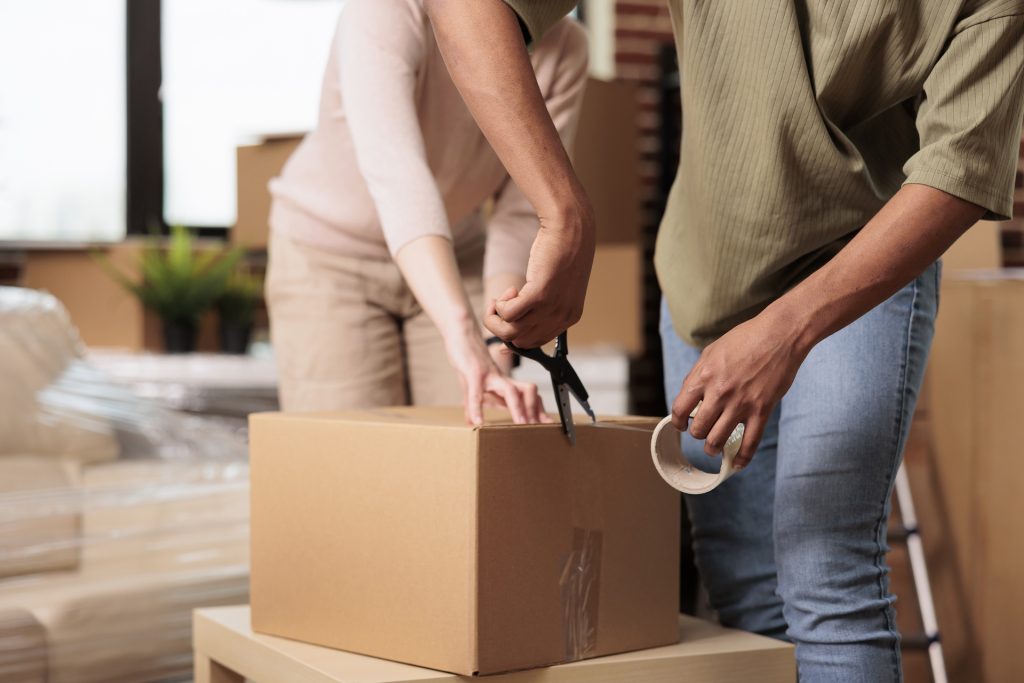Last updated: November 2025
Tips for Storing and Moving Furniture Safely in 2025
Whether you’re downsizing, renovating, or temporarily relocating, storing and moving your furniture doesn’t have to be stressful. With careful planning, practical techniques, and the right support, you can protect your belongings and make the process much easier.
At Palmers Relocations, we’ve helped Australians move and store furniture for over 40 years. As an AFRA and FAIM-accredited, we’re happy to share tips that help you prepare and protect your belongings.
Why Proper Furniture Storage Matters
Storing furniture without preparation can lead to damage, mould, or loss. Clean, organised, and well-packed items stay safe and retain their value — whether you’re storing for a few weeks or several years. Proper preparation also reduces stress when it’s time to move or retrieve your items.
Cleaning and Preparing Your Furniture
Before storing or moving, ensure every item is clean and dry to prevent damage or odours:
-
Fabrics & Upholstery: Wash clothing, linens, and removable covers. Dry thoroughly to prevent mould or odours; even small damp spots can attract insects over time.
-
Appliances & Electronics: Defrost and clean fridges, freezers, and small appliances. Dry completely before storage — moisture can damage components or encourage mould growth.
-
Furniture Surfaces: Dust and polish wooden surfaces, using protective covers if needed. This protects finishes from scratches and dust accumulation during storage.
Proper cleaning prevents long-term damage and helps preserve the condition of your items.

Creating a Detailed Inventory
An accurate inventory saves time and prevents lost items. You can use:
-
Traditional method: Pen and paper with item name, description, and location.
-
Digital tools: Apps like Sortly, Memento, or Google Sheets allow photos, serial numbers, and QR codes for easy tracking.
Include key details such as:
-
Brand, type, and material of furniture
-
Room or storage location
-
Accessories or screws (especially for disassembled items)
-
Special handling instructions
A well-documented inventory ensures you can locate every item quickly, reducing stress and mistakes.
Labelling and Colour-Coding Boxes
Efficient labelling makes retrieval simple:
-
Assign a colour per room (e.g., kitchen = red, bedroom = blue).
-
Label both the top and side of each box for visibility.
-
Include brief content descriptions to make items easy to identify at a glance.
Colour-coding and clear labelling save time and prevent unnecessary searching later.
Disassembling Large Furniture
Whenever possible, dismantle bulky items like beds, wardrobes, or tables:
-
Tag all pieces to simplify re-assembly.
-
Keep screws in labelled bags inside a dedicated “Safe Spot Box.”
-
Protective covers prevent scratches or dents during transport.
Disassembly saves storage space and lowers the risk of damage, making moves smoother and safer.
Packing Techniques for Safe Storage
When packing, consider both weight and cushioning:
-
Box size & weight: Heavy items like books should go in small boxes to prevent tearing or back strain; lighter items can go in larger boxes.
-
Cushioning: Fill gaps with bubble wrap, packing paper, or eco-friendly fillers to prevent items from shifting during transport.
-
Tape carefully: Avoid sticking tape directly on painted or delicate surfaces.
-
Fragile items: Wrap individually and mark clearly. Small precautions here prevent costly damage later.
Using eco-friendly packing materials, like biodegradable bubble wrap or reusable crates, is both sustainable and effective.

Choosing the Right Storage Type
Your storage choice depends on volume, duration, and access needs:
-
Container Storage: Ideal for long-term storage or whole-house moves. Can hold up to 36 cbm (~3-bedroom home).
-
Modular Storage: Flexible solution for smaller shipments (~one-third of a container).
-
Self-Storage Units: Access your items 7 days a week. Sizes vary to accommodate furniture and boxes.
-
Specialised Storage:
-
Climate-Controlled: Protects artwork, electronics, fine furniture, or wine.
-
Secure Wine Storage: Maintains correct temperature and humidity.
-
Selecting the right storage type ensures your belongings remain in optimal condition.
Organising Your Storage Space
-
Place heavier items at the bottom and lighter boxes on top.
-
Arrange large furniture along the sides for easy access.
-
Leave gaps to allow airflow and reduce mould risk.
-
Keep frequently used items near the front for convenience.
Thoughtful organisation maximises space, protects your belongings, and makes retrieval simple.
Insurance and Security Considerations
-
Check storage insurance coverage for your belongings.
-
High-value items like antiques or artwork may require additional protection.
-
Modern storage facilities, including Palmers, provide secure and monitored access.
Proper insurance and security provide peace of mind and safeguard against unexpected events.
How Palmers Relocations Can Help
From local moves to international relocations, Palmers provides end-to-end moving and storage solutions. Our storage services include:
-
Climate-controlled storage for sensitive items
-
Professional packing and unpacking
-
Container, modular, and self-storage options
-
Furniture disassembly and reassembly
Our expert team ensures your items are stored safely, giving you peace of mind while you settle into your new home. Contact Palmers Relocations today to discuss your storage and moving needs — we’ll create a tailored solution to keep your furniture safe, organised, and easily accessible. Call 1300 363 916 or visit Palmers Relocations to get started.

